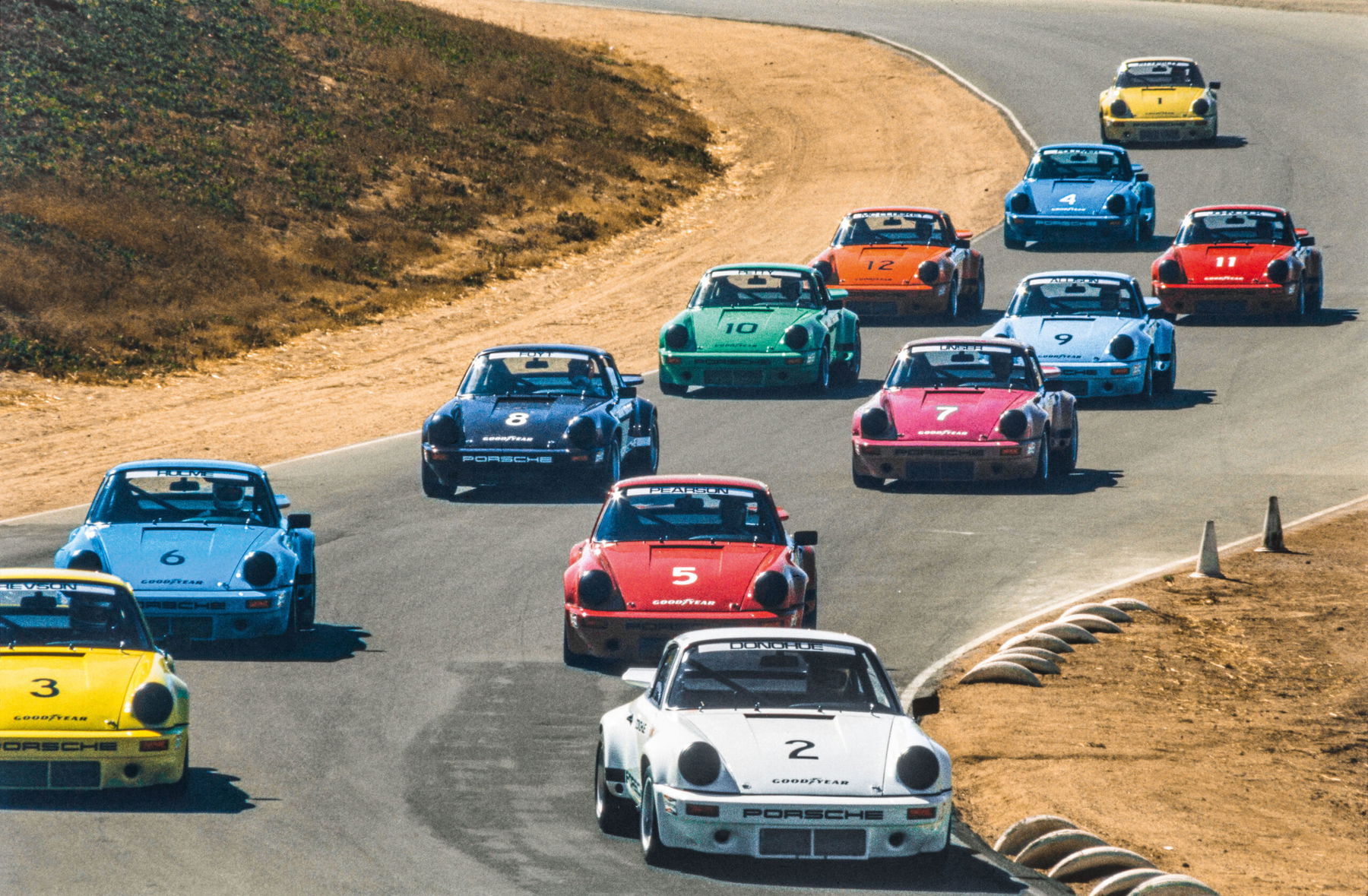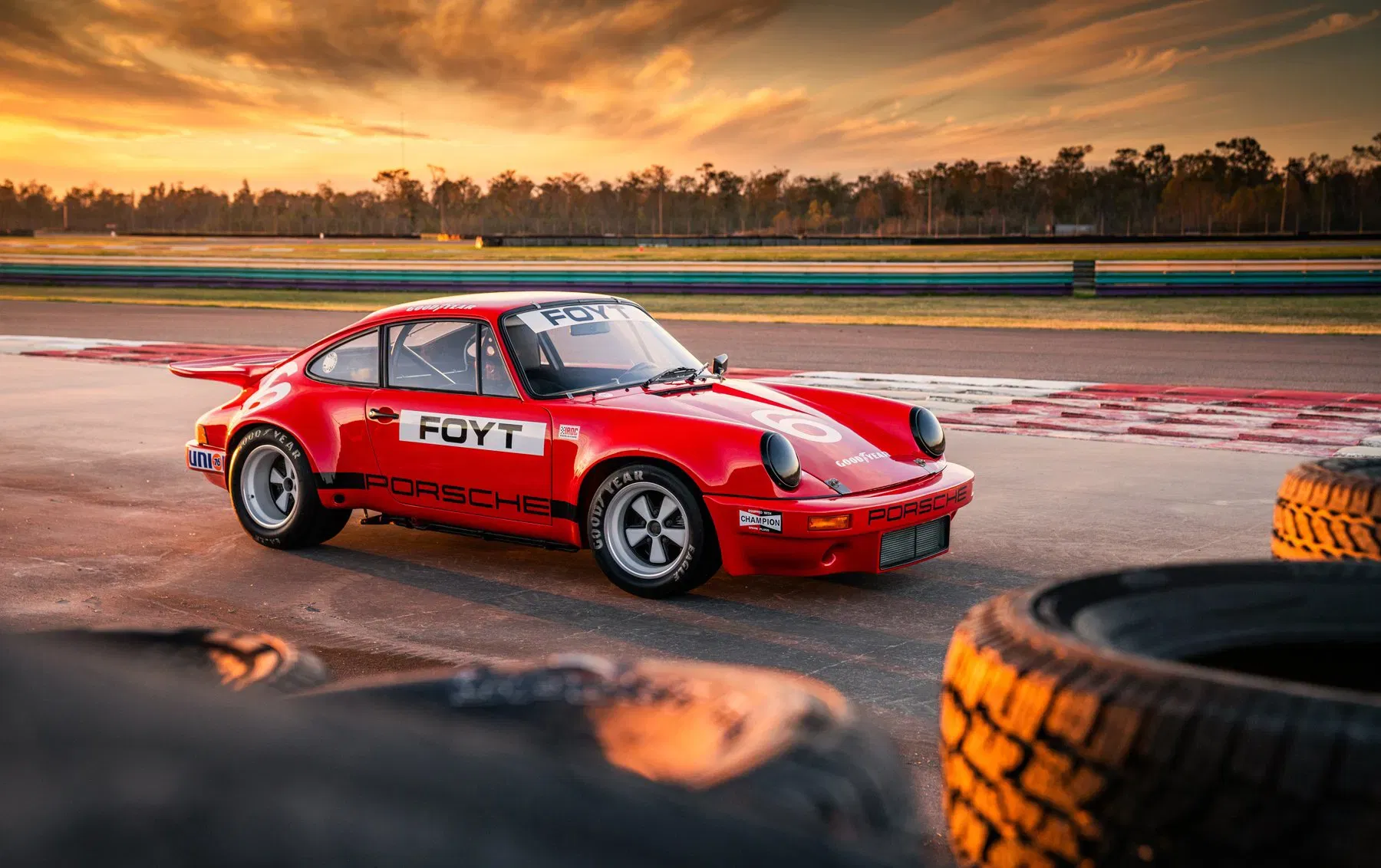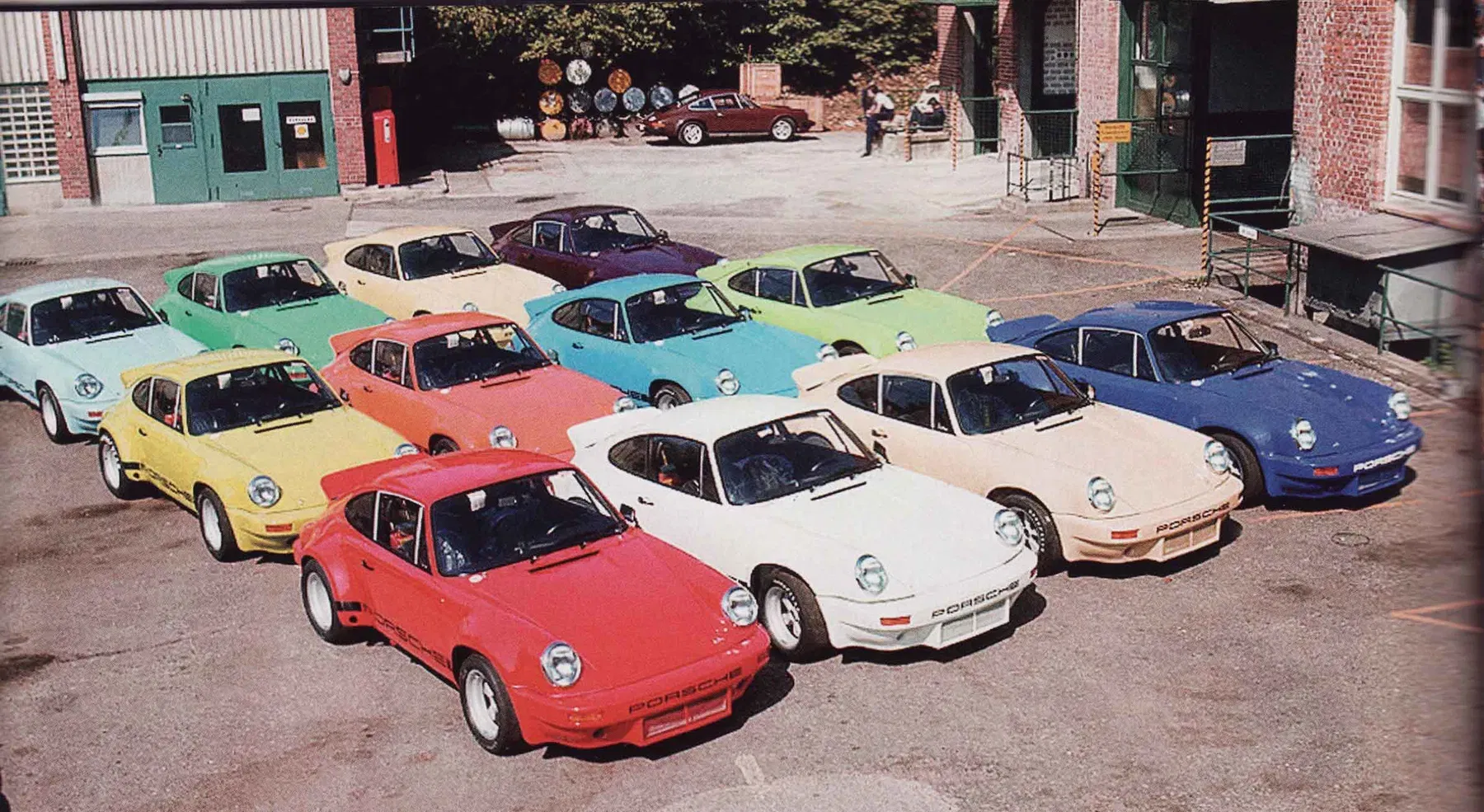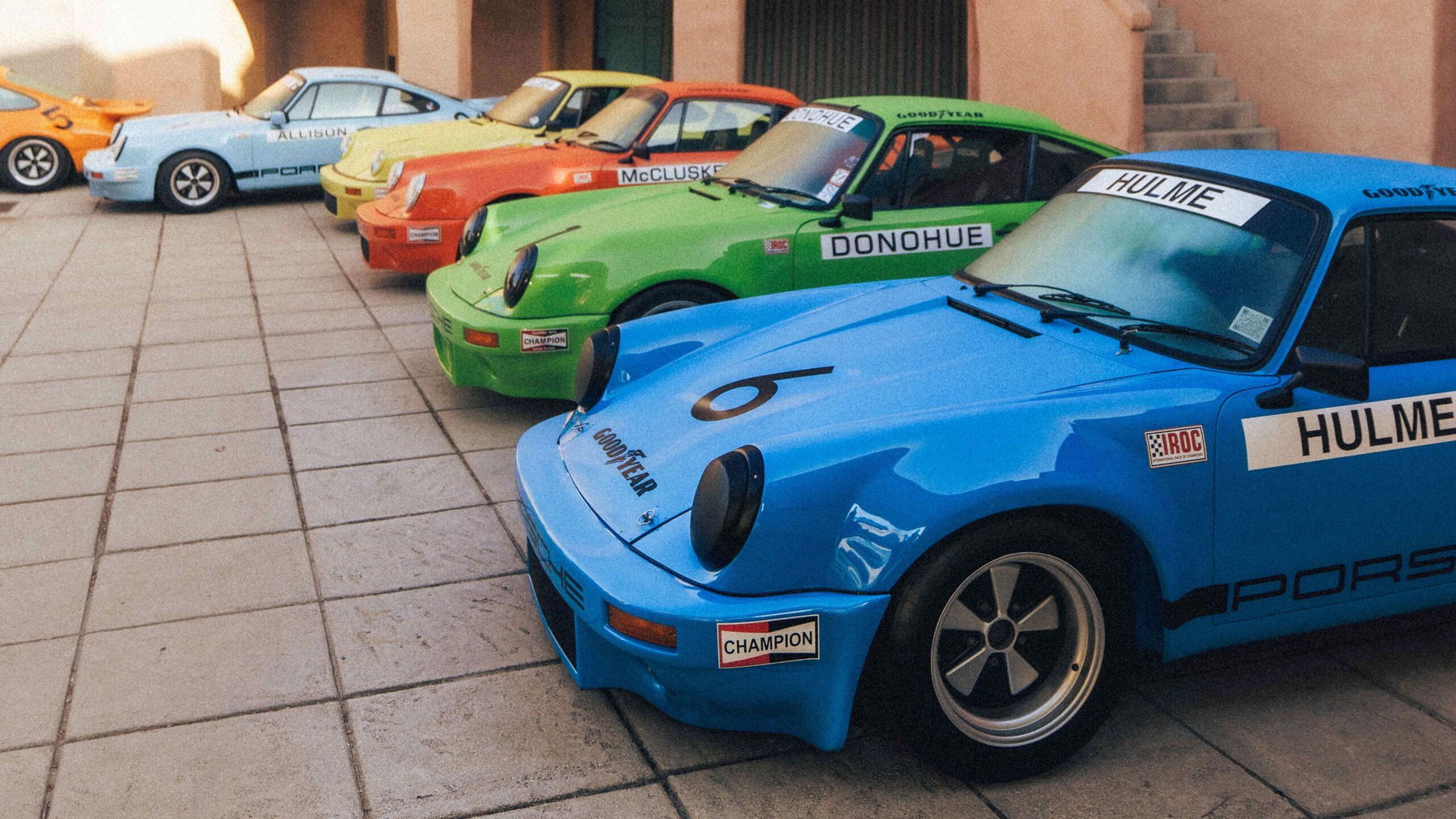
In 1973, a vision of ex-American Footballer Les Richter, racing team owner Roger Penske and TV producer Mike Phelps became reality. The idea was as simple as it was spectacular: What if you put the best drivers in the world in identical cars? No differences in technology or team – only the talent of the drivers would decide who won. The “International Race of Champions”, or IROC for short, was born. And the first edition was held with the now legendary IROC Porsche, the 911 Carrera RSR 3.0 IROC.
In order to guarantee equal opportunities, a car was needed that was so good that nobody had a technical advantage. But it also had to be so demanding that it rewarded driving skills. After consultations with his star driver Mark Donohue, it quickly became clear which brand should supply these cars. As Roger Penske had already had good experience of working with Porsche in the past, the Stuttgart-based company was to supply the appropriate cars. Penske ordered a total of fifteen cars.

The engineers in Weissach designed a new model especially for the International Race of Champions. As is often the case with Porsche, parts from different models were combined. In principle, it was a hybrid of the Porsche 911 Carrera 2.8 RSR from 1973 and the 3.0 RSR developed for 1974. However, Porsche used conventional mechanical fuel injection. The result was the approximately 315 hp Porsche 911 Carrera RSR 3.0 IROC.
© Maxted-Page & Ryan Merrill, RM Sotheby’s
The twelve best drivers from the world’s best-known racing series were to duel it out in the specially prepared 3-liter RSRs. Drivers from Formula 1, the SCCA Sports Car Championship, the American open-wheel championship USAC and NASCAR competed against each other. The line-up was as follows: Emerson Fittipaldi, Denny Hulme, Peter Revson, Mark Donohue, George Follmer, Bobby Unser, AJ Foyt, Gordon Johncock, Roger McCluskey, Richard Petty, Bobby Allison and David Pearson. They fought for a total of 175,000 US dollars in prize money. In 2025, that equates to around 1.25 million dollars.
Each of the 15 IROC Porsches was given its own color. This was to make it possible to distinguish the drivers as quickly as possible. After all, Penske and his colleagues had planned the IROC as a top-class television event. The colors ranged from signal orange to viper green, from Sahara beige to Mexico blue. But the paintwork was not just for better differentiation on TV. It also became the trademark of the series, so to speak. These colorful IROC Porsches were allocated by lot. This guaranteed equal opportunities in every case.


The trio of organizers chose Riverside International Raceway in Arkansas as the venue for the first “All-Star Game” in motorsport. The three heats of the first IROC took place there in October 1973. After that, the top six competed for overall victory in Daytona on Valentine’s Day 1974. Mark Donohue, Peter Revson, Bobby Unser, David Pearson, George Follmer and AJ Foyt made it to the final. Victory and a total of 54,000 US dollars in prize money was secured by the then Penske driver Donohue ahead of Revson and Unser.
What remained was more than one winner, though. The IROC series created a racing format that is still considered a prime example of real motorsport today. No team, no budget – just driver against driver. And in the middle of it all: the IROC Porsche as the absolute equalizer. And, to a certain extent, the blueprint for various concepts that repeatedly stood for ingenious racing as so-called one-make cups in the decades to come.
The colorful IROC Porsches were only used in the first edition of the series. And although the RSRs did not shine with reliability – in addition to Fittipaldi, Gordon Johncock and AJ Foyt, among others, had technical problems in the series – they are part of the most famous racing Porsches ever. Many of these still exist today, often restored and rarely with a comprehensive history. But when one of the 15 original IROC Porsches appears on the market, it inevitably triggers a huge media response in the scene. No wonder, as the highest bids for the brightly colored stars of yesteryear are usually starting at 1.5 million US dollars and more.
When one of the 15 original IROC Porsches appears on the market, it inevitably triggers a huge media response in the scene.
And here comes one of the most curious stories about the IROC Porsche. Because the most famous of them all, delivered with chassis number 911.460.0100 did not become world-famous because Formula 1 world champion Emerson Fittipaldi drove it. The later owner of the Sahara RSR was responsible for this: Pablo Escobar.
F1 world champion Emerson Fittipaldi and the Colombian drug lord Pablo Escobar have already sat in this cockpit. © Ryan Merrill, RM Sotheby’s
The Colombian drug lord was not only the ruler of a criminal empire. He was also a motorsport enthusiast. Among others, Escobar also owned a Porsche 935. In the 1980s, Escobar bought one of the original IROC Porsches. It was the car, Emerson Fittipaldi had damaged in the first race at Riverside. According to reports, Escobar had a larger rear spoiler and modified front splitter installed. His alleged racing activities with the car are not verifiable, though. But this does not detract from the legend.
The IROC Porsche embodies what motorsport is all about in its purest form: equality, technology at the highest level and the search for the best driver. Its history is closely interwoven with the motorsport culture of the 1970s – and with personalities who made history on and off the track. In a way, the International Race of Champions was also the blueprint for the later Porsche one-make cups, which led to today’s extremely competitive Porsche Carrera Cups.
© Titelbild: Rainer Schlegelmilch
Elferspot magazine